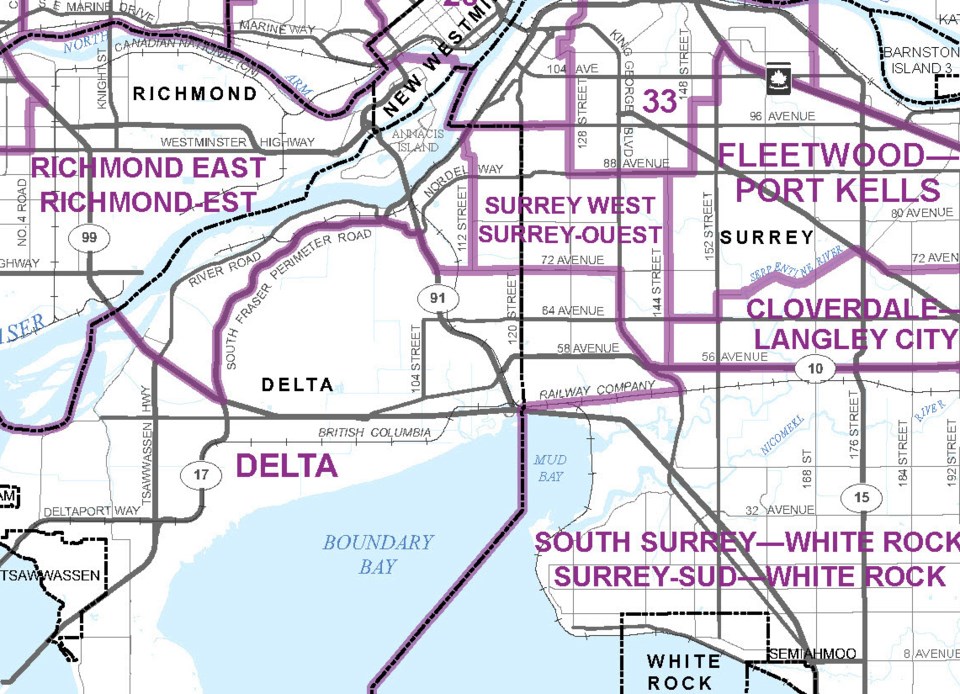The federal riding of Delta could once again undergo a major revision of its boundaries.
The Federal Electoral Boundaries Commission for British Columbia has proposed a new electoral map for consideration at public hearings this spring and fall.
The map introduces changes to federal electoral district boundaries and has been developed through an independent and non-partisan process.
The City of Delta had previously been divided with South Delta being part of the Delta-Richmond East riding, while North Delta was attached to Surrey as part of the Newton-North Delta riding.
By the 2015 election, the boundaries were reconfigured to combine both North Delta and South Delta into one Delta riding.
However, Delta could once again be divided as a new riding called Delta would see Ladner, Tsawwassen and North Delta below 72 Avenue join part of Surrey, extending all the way to King George Highway.
Another part of North Delta would be lumped into Surrey as part of a Surrey riding, while another area of North Delta and the River House area of Ladner would join a newly reconfigured Richmond East.
It’s part of many changes being proposed in response to the significant but uneven growth in B.C.’s population.
Saying it’s part of a mandated process of regular reviews to make sure there’s fairness, so that ridings with smaller populations don’t have more voting weight than those with more people, Justice Mary Saunders, chair of the three-member commission, told the Optimist the changes are mainly in response to the significant but uneven population growth.
She said no one riding, including Delta which on its own is fine, is singled out, but changes needed several ridings away can result in a domino effect.
“What’s happened with the Richmond and Delta ridings in particular are a reflection of that bulge in population that is east of there. We needed to find a way to accommodate it,” she explained.
Noting geography including rivers and mountains can also pose a challenge in redrawing boundary maps, Saunders said Richmond and Delta have grown but not at the same pace as the ridings that include Surrey and the Fraser Valley.
“We’re independent and don’t have information on how the various ridings voted, so we just looked at it from a population point of view and geography,” she said.
Saunders added they hope the public will take the time to comment and give their ideas, understanding that it’s not just about local ridings but a much bigger picture.
“Whatever solution it is, it ripples out to other ridings,” said Saunders.
The commission says that its main aim in redrawing boundaries, under the Electoral Boundaries Readjustment Act, is to divide the province into 43 electoral districts that are as close to the electoral quota as reasonably possible.
The commission is holding 27 public hearings, in-person and virtual, to gather comments and feedback on the proposed boundaries and electoral district names.
One of those will be held at the Coast Tsawwassen Inn on Thursday, June 9, starting at 7 p.m.
Those wanting to make a presentation are asked to send the commission a notice no later than a week prior.
For more information about the proposed electoral boundary changes, the public hearings or to make a presentation, check out: redistribution2022.ca.



